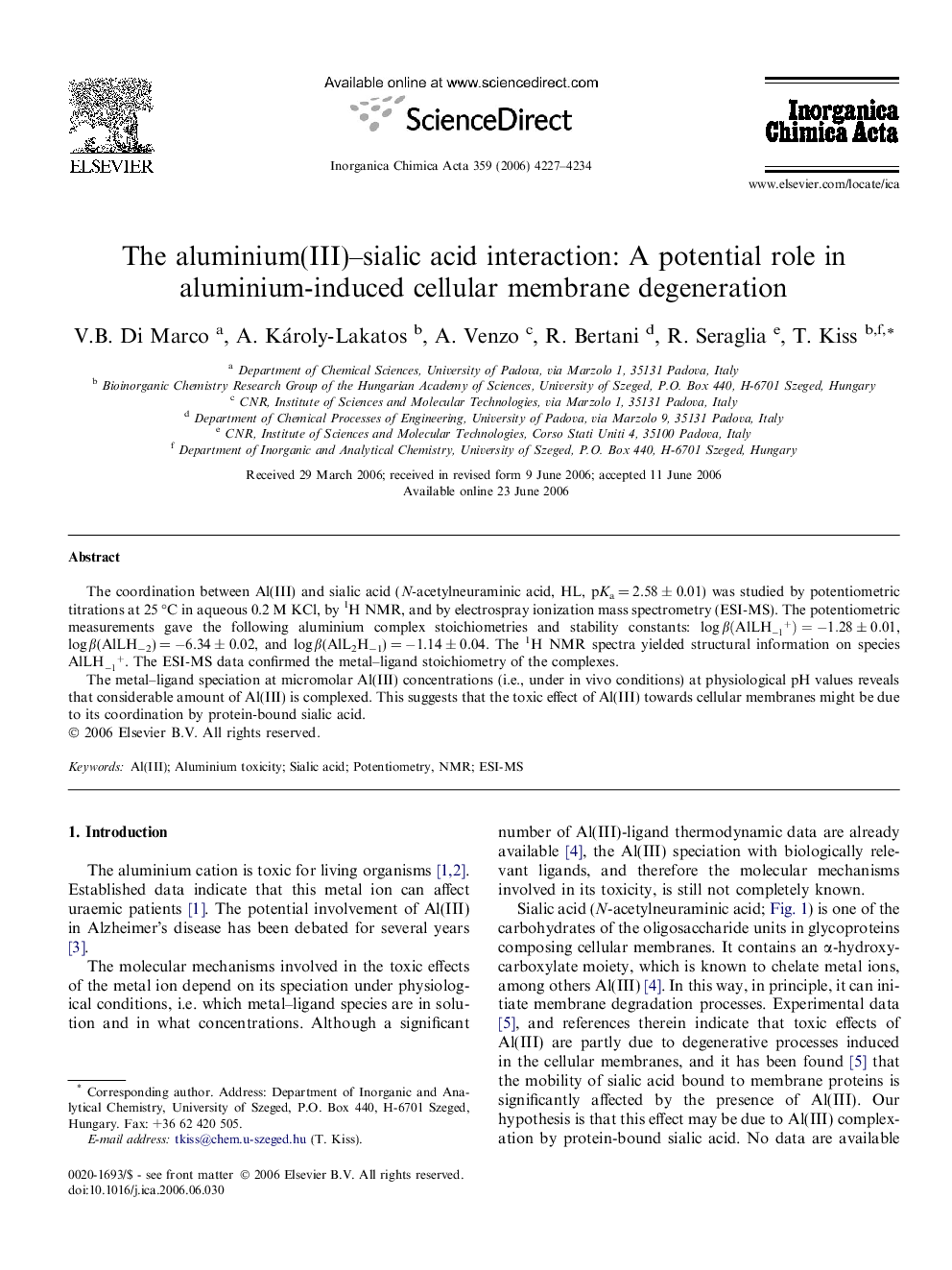| Article ID | Journal | Published Year | Pages | File Type |
|---|---|---|---|---|
| 1312857 | Inorganica Chimica Acta | 2006 | 8 Pages |
The coordination between Al(III) and sialic acid (N-acetylneuraminic acid, HL, pKa = 2.58 ± 0.01) was studied by potentiometric titrations at 25 °C in aqueous 0.2 M KCl, by 1H NMR, and by electrospray ionization mass spectrometry (ESI-MS). The potentiometric measurements gave the following aluminium complex stoichiometries and stability constants: logβ(AlLH-1+)=-1.28±0.01, log β(AlLH−2) = −6.34 ± 0.02, and log β(AlL2H−1) = −1.14 ± 0.04. The 1H NMR spectra yielded structural information on species AlLH-1+. The ESI-MS data confirmed the metal–ligand stoichiometry of the complexes.The metal–ligand speciation at micromolar Al(III) concentrations (i.e., under in vivo conditions) at physiological pH values reveals that considerable amount of Al(III) is complexed. This suggests that the toxic effect of Al(III) towards cellular membranes might be due to its coordination by protein-bound sialic acid.
Graphical abstractThe coordination between Al(III) and sialic acid has been studied by potentiometric titrations, 1H NMR, and ESI-MS. The metal–ligand speciation indicates that at micromolar Al(III) concentration (i.e., at in vivo conditions) significant complexation occurs at physiological pH. Therefore, this interaction might have a role in aluminium-induced cellular membrane degeneration.Figure optionsDownload full-size imageDownload as PowerPoint slide
